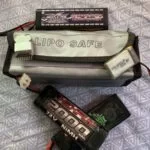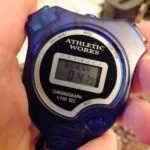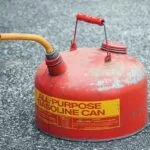Winter Is Coming: RC Cars And Cold Weather (Complete Guide)
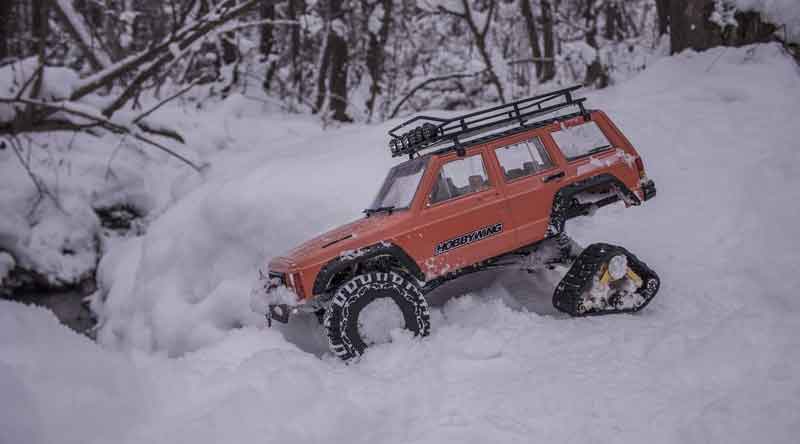

Winter is here! For many, this is the perfect time to enjoy a fun ice-skating and snowboarding event with loved ones. For RC car hobbyists, the cold weather might just hinder your racing game.
RC cars are designed for a warm climate. When used during the winter months can cause negative effects and costly repairs for your RC cars. To keep your RC car running in the best condition on ice or snow requires a proper preparation.
In this guide, we learn about the proper techniques to keep your RC car running in winter.
How Cold Is Too Cold for RC Cars?
While RC cars are designed for the warm climate, some RC cars can run in wintertime. However, you want to make sure that the engine temperature does not drop below 35°F. If you notice your car temperature drop below this, make sure to put it off and conduct quick maintenance practice.
A Temperature below 35°F close to 30°F or less, may damage the car engine and make it difficult to start or tune when driving.
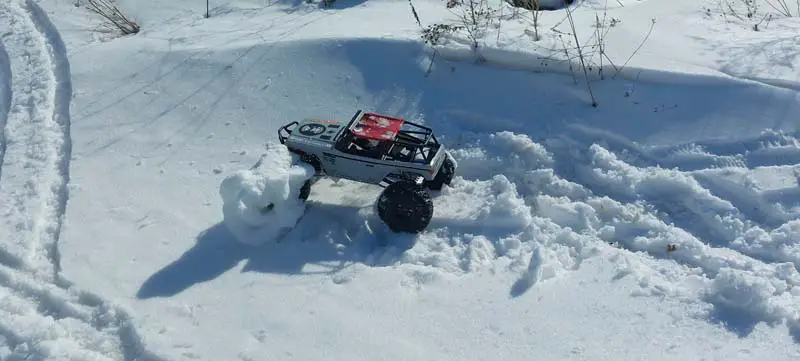

Can You Run an RC Car in the Cold?
RC cars can run in the cold. However, this is not a universal trait of all RC cars.
If you run your RC cars carelessly in wintertime, they might end up damaged and need costly repairs or replacement. The good news, if you know how to take care of your car during winter, you can drive around in the snow with ease. Apart from this, some RC cars come with some add-on options that make running on the snow in the cold and wet season possible.
Can RC Cars Be Stored in the Cold?
RC cars are best cleaned, lubricated, and stored at room temperature. But, that doesn’t mean you can’t store your RC car in the cold. Properly storing your RC cars in the cold will keep you from spending an exorbitant sum on repairs months later.
There’s no problem storing an RC car in the cold.
To store in the cold, unplug the batteries, drain the fuel (in nitro RC cars), lubricate the engine and other moving parts to keep them in mint condition. Then, keep elevated with the tires sealed in an airtight container to prevent water from damaging your RC car tires.
How Cold Is Too Cold for Nitro RC Cars?
If you’re going to take your nitro-powered car out in the cold weather, understand that your car engine shouldn’t run below 2°C or 35°F.
Temperatures like this are too cold for your Nitro RC as they burn out the fuel engine faster.
How Do Cold Temps Affect Nitro Engines?
Your nitro RC car’s effectiveness depends on how well and in good shape the engine is. However, your nitro car can introduce significant challenges when used in low temps climate conditions. Cold temperature accelerates quick-wear in the engine, and you won’t even know until after winter.
When cold temps affect the nitro engine, you observe that it becomes hard to start, and fails to idle smoothly, especially when hot, plus it stalls often when the speed is almost at idle.
To be safe on your drive, make sure to:
- Warm-up your engine
Preheating your nitro engine up to room temperature before use in the cold will keep it from quick damage and starting challenges. You want to make sure there’s no fuel in the engine. Nitro fuel gels up when the engine is extremely cold.
Make sure to clean and pre-heat properly to make your drive in the snow a bit more fun than you anticipated.
- Bonus Tip: break in a nitro engine while it’s cold
Breaking into your nitro engine takes one or two hours to complete and about three to five tanks of fuel. To break-in a nitro engine:
- Choose a clean, flat, and paved surface for initial break-in with the body off.
- Don’t run your engine past throttle and don’t run at a constant speed.
- Prime your nitro engine between two seconds to avoid flooding. Start by turning in the RC. Then, check that the fuel moves through the fuel carburetor. If it doesn’t after 3 seconds, place and Reese your finger on The tip of the exhaust for a few seconds. If during this process your engine floods, remove the glow plug, place a rag on the engine head, start the engine to remove leftover fuel. Then wipe the head with clean clothe and reinsert the glow plug. Then, begin the tank break-in process.
- Do a five tank nitro break-in
- Tank 1: run a one-quarter throttle on the engine for 2 seconds, and apply brakes. Avoid pulling the throttle fast to prevent the engine from stalling. Continue running the fuel tank until almost empty, then shut off the engine by pinching the fuel line to the carburetor. Make sure it cools for 15 minutes before moving to the second tank.
- Tank 2: advance to half-throttle for 3 seconds. Make sure to accelerate smoothly throughout the process. Then, repeat the shut-off and cool down steps like in the first tank.
- Tank 3: run for 3 seconds at half throttle, then brake. Now the engine begins to loosen. You also don’t have to let your engine cools down between tanks anymore.
- Tank 4: pull to full throttle at 3 seconds, then brake. Make sure to accelerate smoothly to avoid flipping the RC over.
- Tank 5: repeatedly accelerate to full throttle in 3 seconds, hold for 2 seconds, then brake. After this, your break-in process Is done.
If you’re not sure about the components of your RC, avoid attempting a break-in, as it may cause more damage than good.


How Cold Is Too Cold for Nitro Fuel?
A temperature below 10°C or 50°F can render your nitro fuel unusable.
Why? When the temperature falls below freezing, the nitro fuel takes in much cold air and begins to get up. If you notice your nitro fuel gels up, pour out of your engine immediately as it can damage the engine.
How Cold Is Too Cold for an Electric RC?
When the temperature drops below 20°F, it can be too cold for the components of your electric RC car to handle. The electric car batteries take the majority of the hit as the cold temperature limits the regenerative braking function of the car.
How Do Cold Temps Affect Electric Motors?
When the cold becomes excessive, it impacts greatly on your electric motor, especially making it overheat. Overheating occurs when the ventilated enclosure of your electric RC cars gets covered in ice, leaving little to no room for your RC car to cool.
How Cold Is Too Cold for a Brushless Motor?
A brushless motor has no real issues with the cold weather. However, they can damage when left under a cold temperature of 20°F and below.
- How cold is too cold for the brushed motor?
Like brushless motors, brushed motors can work well in the cold. But, they have to be kept under a temperature above 35°F. Anything lesser would render the motor unproductive.
- Can an electric RC motor be too cold to run?
Yes, an electric motor can be too cold to run, especially when its temperature drops to 10°C or 50°F above the operating temperature. This low temperature will shorten the life of the motor.
How Cold Is Too Cold for RC Batteries?
Generally, RC batteries don’t like the thought of wintertime.
When you notice its temperature drops to 10°C, the cold is probably at its peak and will damage your battery life. When the temperature gets to this point and does not damage needing immediate replacement, your RC battery might likely lose its performance power. An over-the-counter cold temperature slows down the chemical reaction process, making the battery lose effectiveness.
- How cold is too cold for a LiPo battery?
Lithium Polymer (LiPo) batteries don’t work well in the cold. Why?
The cold temperature affects the battery’s discharge rate. Usually, when the temperature drops to 50°F (10°C), the battery loses functionality and starts to notice a significant drop in performance rating.
However, when the temperature becomes overbearing, batteries temperature becomes 20°F (-7°C). A temperature like this is what we define as too cold for a LiPo battery. It’s below freezing point AMD can damage your battery.
- How cold is too cold for a NiMH battery?
Nickel-metal hydride (NiMH) batteries may not necessarily lose performance in the cold. However, it’s best to watch out for its temperature. NiMH batteries strongly depend on their temperature for top-notch performance.
When the temperature drops below 20°F, the battery loses its performance power due to electrochemical deterioration of the electrodes, unlike when it’s under room temperature.
Conclusion
Enjoying fun RC car racing during the winter months is possible. However, caring for your electric or nitro-powered RC cars to ensure they are in their best conditions during winter is necessary.
From this guide, you know the significant impact cold weather has on your RC cars. If your car could talk, it would accuse you wrongly for not protecting it in the cold with unexpected maintenance and installation expenses. So, use this guide to keep your RC cars running properly on snow and ice without incurring expensive repairs.

